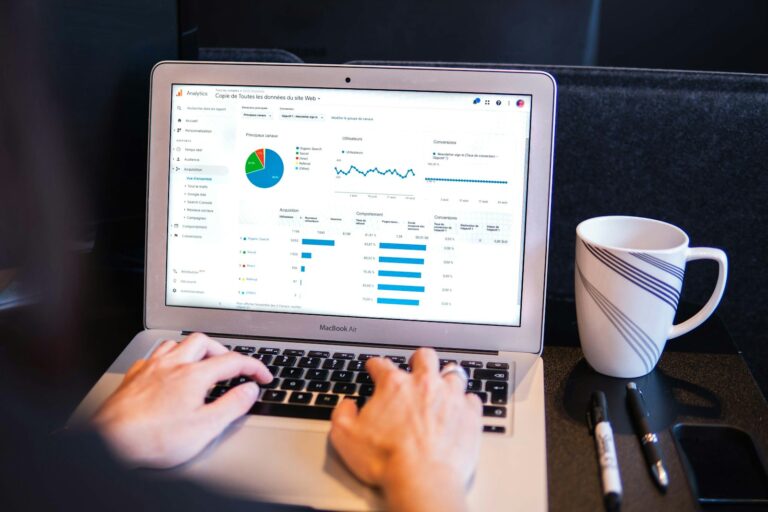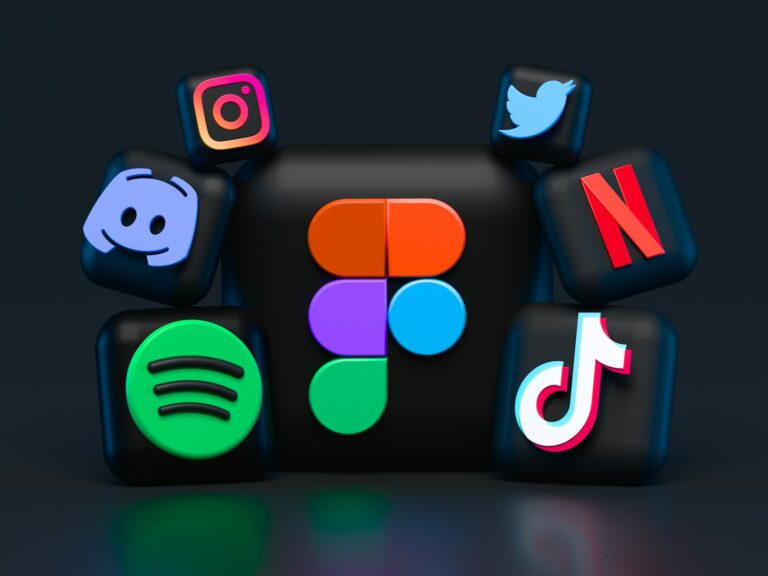
The ways in which professionals connect with one another have been turned on their head. Gone are the days where trading paper cards meant something. Networking of today needs speed, productivity and quantifiability. Digital connectivity has advanced more than the exchange of contact details to building a networking ecosystem where interactions matter and connections can be linked, nurtured and monetised.
For companies and professional people who need to stay abreast of trends, it’s not just good to know which features matter — it can be vital. The right digital tools can make converts out of chance encounters into foot soldiers in the business trenches — provided you know what to focus on.
Why Digital Business Is Reshaping Professional Networking
Switching to digital business tools isn’t just about making things easier. It’s a big change in how people want to work together, share stuff, and connect with each other. Old-school ways just can’t keep up with how fast and connected business is these days.
The Cost of Staying Traditional
Printing cards finances potential fraud with credit card or identity theft costing corporations thousands of dollars each year, then tossed in the waste bin. Over and above the financing waste, outdated numbers in printed cards equate to lost opportunities. Every time your phone number changes or you start a new service, each and every business card physically in circulation becomes a dead end for prospective customers.
Digital business solutions eliminate this problem entirely. Update your information once, and everyone who has your digital profile sees the changes instantly. This real-time accuracy builds credibility and ensures no opportunity slips through the cracks due to outdated contact details.
Interactive Elements That Drive Real Engagement
The thing that makes a digital business tool actually get you leads, instead of just sitting there unused, is if it has interactive stuff. If it just shows the same stuff all the time, people won’t care or do anything. But if it’s fun and changes, then people pay attention.
Smart Links That Guide Your Prospects
Putting links in the right spots can turn people who are just watching into people who are actually interacting with your business. Instead of just hoping they remember to search for you later, you can use links to get them involved right away. They can get to your work examples, appointment calendar, or products with just one click.
The trick is to be thoughtful. Each link should help move people further along in becoming a customer. For example, consultants might have a Book a Call button, while artists could have a Check out My Work link, and business owners a Buy Now button. These all push potential customers to the next thing they should do. If you put too many links, it can confuse people. But if you use the right links, you can get more conversions.
Visual Storytelling Through Multimedia
Our brains get visual info way faster than text – like, 60,000 times faster! Because of this, using multimedia is super helpful for businesses now. A short video can do way more than a bunch of writing to make your brand relatable and build real rapport.
Showing off how your stuff works, displaying your past projects, or giving sneak peeks of what goes on behind the scenes gives potential customers real evidence that you know your stuff. For example, building designers can show off their recent work with cool photos, and advisors can share videos of happy clients. Store owners can put their popular items on display. Visuals like these just don’t tell people things, they persuade them.
Still, keep things balanced. Make sure people can still easily find your main points and contact details easily; don’t bury them under media. Think of multimedia as a way to make your key business info better, not switch it out.
Seamless Technology Integration for Maximum Efficiency
People at work today use a bunch of different apps and ways to talk to each other every day. The best tech for businesses fits right into how people already work, instead of making things harder.
QR Codes Beyond Basic Contact Sharing
QR codes aren’t just for swapping contacts anymore. Now, they’re able to do unique things based on the situation. For example, if you’re at a product release, the code can show you an exclusive video. Or, at a conference, it can give you the presentation and other helpful stuff.
You can even make different QR codes for different situations, but still keep your main online business info the same. This way, you can change how you meet people depending on where you are, without needing a bunch of different apps or confusing setups.
Since you don’t have to touch anything to scan a QR code, it’s also great for avoiding germs. Plus, it’s super simple. Just point your camera, scan, and you’re good to go.
Analytics That Inform Your Strategy
Using data to make choices is what makes great online biz plans different from just guessing. Good analytics show who looked at your stuff, plus when they did it, where they are from, and what parts they liked best.
Knowing when folks are most active lets you reach out when they’re more likely to respond. Location info can show you surprising chances to sell. Knowing what devices peeps use makes sure your content looks good for them. How often peeps click links tells you what they really want.
This info changes how you do things, so you can build real bonds instead of just hoping something sticks. You spend time where it pays off, and you fix what’s not working fast.
Security and Professionalism in the Digital Age
With business going online more and more, security worries just keep growing too. If you want people to trust you as a professional, you gotta show them you’re serious about keeping data safe and that you’re in charge of your business info.
Protecting Your Professional Information
Good digital business platforms give you detailed privacy settings. This lets you control what info you share with whom. Like, a possible client can see everything – your work and when you’re free. But someone you just met at a conference? They only get your basic contact details and social media.
These security measures also keep you safe from spam. Unlike business cards that someone can snap a photo of and pass around, digital options let you take back access or change who sees what, whenever you want.
Data encryption, safe storage, and following privacy rules aren’t just tech stuff. They show you’re serious, and that’s what people want in a tool they use for work.
Advanced Customization for Brand Consistency
Your online presence should show off your brand just like your website, social media, or even your office. If you use boring templates and can’t change much, people won’t remember you. You’ll just fade into the background.
Tailoring Cards for Different Audiences
Smart digital businesses get that you shouldn’t give everyone the same spiel. Someone hunting for a job might want to quickly see your resume and what you’ve done. On the other hand, an entrepreneur would want to know about your products and what customers say about them.
Making sure your online profile speaks to who’s looking at it keeps things personal and relevant. You don’t have to run a bunch of different sites — just focus on showing off different sides of your work, depending on the situation.
Things like colors, how the page is set up, what you show first, and even the words you use can shift to fit different folks, all while keeping your brand consistent. Doing this was a pain with old-school business cards, but it’s easy now with new digital tools.
CRM Integration That Captures Every Opportunity
When someone shows interest in what you offer, that’s the best time to turn them into a customer. Using digital tools that work with your CRM system helps you keep track of leads so you don’t miss out.
Automatic contact capture gets rid of manual data entry and mistakes. If someone scans your code or saves your info, their details go straight into your CRM, ready for follow-up. Automatic welcome messages can start right away, so they remember you when they’re still interested.
This also gives your sales team the info they need to follow up well. When did this person first get in touch? What did they look at? What stuff did they like? With this info, you can give advice instead of just cold calling.
Taking Action: Your Digital Business Roadmap
Moving to digital business stuff doesn’t mean you have to ditch everything you’re doing now. Just figure out what you want your networking to achieve and find the features that fix your problems.
It’s better to pick one platform that does it all instead of trying to stick different tools together. Find something that has the main stuff like interactive links, video and picture options, QR codes, analytics, and CRM stuff all in one place. Give the platform a try in real networking situations before you fully commit.
Keep your online business profile updated all the time like it’s always changing. Don’t just set it up once and forget about it. Check your analytics every month to see what’s working, and tweak things as needed. Try out different stuff for different people, and keep track of what gets the best results.
The most important thing is to make sure everyone on your team who reps your business can get to and knows how to use your digital business system. If everyone across your company is on the same page, it makes your business look way better and makes sure you don’t miss any chances.
Common Questions About Digital Business Solutions
How do digital business tools compare in cost to traditional printed cards?
Most online platforms cost around $10 to $30 a month, which gets rid of printing costs that can easily be hundreds of dollars each year. Aside from the obvious savings, online options save you money by making sure you don’t miss out because of old info. You can update things right away without needing to print anything again.
Can older clients or less tech-savvy contacts use digital business cards?
QR codes today are easy to use. Just point your phone’s camera at one, and you’re done—no need to download a special app or be a tech expert. People usually find scanning a QR code to be way easier than typing in all the info from a business card. And, if someone would rather not scan, you can always send them your details via text, email, or a link.
What happens if I change jobs or rebrand my business?
Digital tools are really useful here. Change your info in one spot, and bam, everyone with your profile sees the update right away. Forget about wasting paper on cards or awkwardly explaining old info – just smooth sailing for your work contacts.
How secure is my information on digital business platforms?
Good platforms protect your info with strong encryption and follow privacy laws. You decide what info is shared and can stop access whenever. Unlike paper cards that anyone can snap a photo of and pass around, digital options let you stay in charge of your data.
Do I need different digital profiles for different aspects of my business?
With good platforms, you can keep just one main profile but change it up for different people. For example, you can focus on your consulting work for some and your speaking gigs for others. It’s all from the same account, so you don’t have to keep track of multiple profiles.
How quickly can I set up a professional digital business presence?
Most platforms let you set things up in less than half an hour. Just make sure you’ve got your stuff ready: a good photo, your bio, links, and any videos or pics you wanna add. Once it’s all set, sharing is super quick with QR codes, links, or just sending it directly.
Will analytics really improve my networking results?
Data changes guessing games into real strategy. If you know what content people like, when they’re online, and how to reach out best, you can put your energy where it pays off. Even simple stats can give you ideas to make people convert over time.






